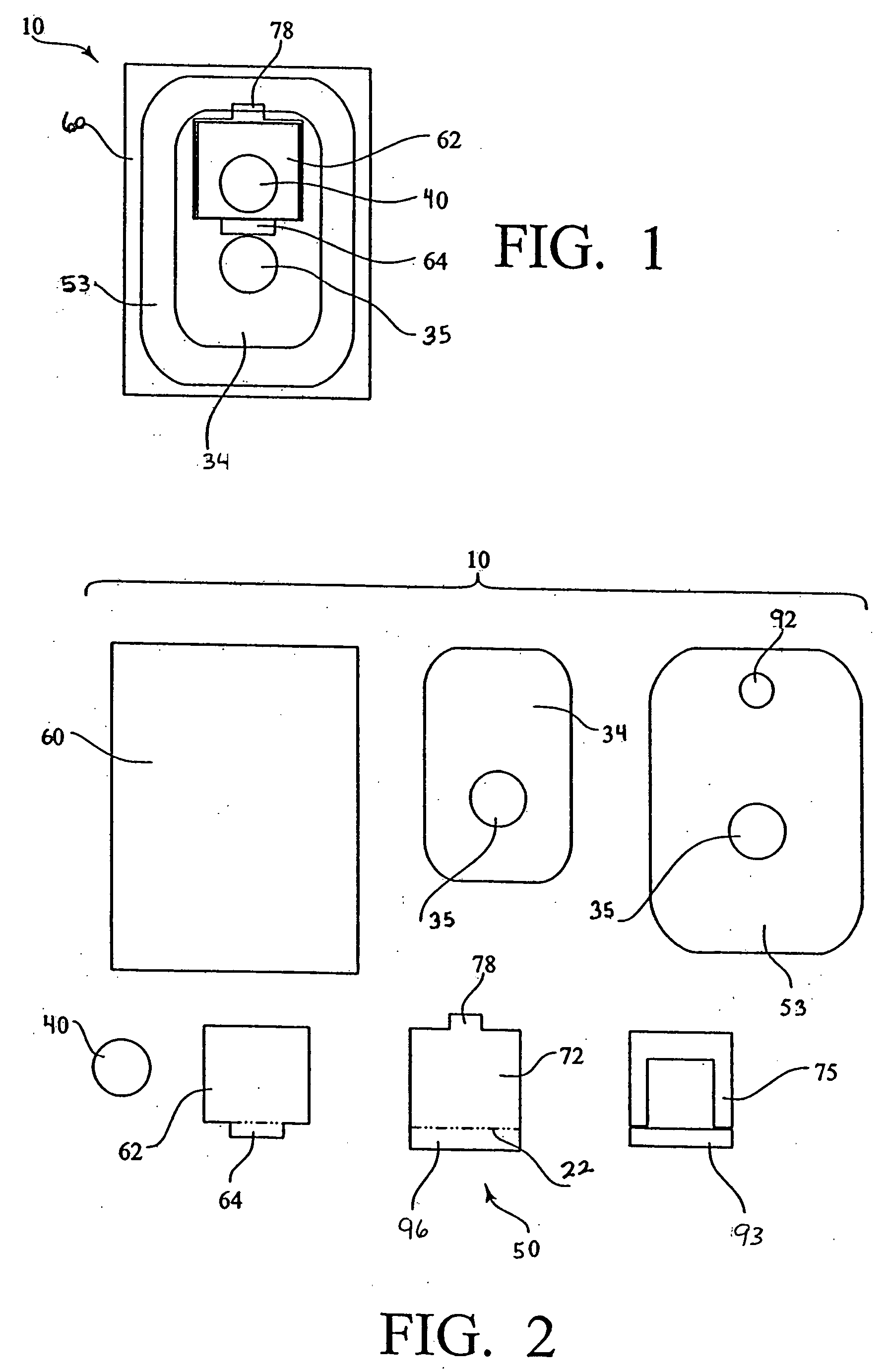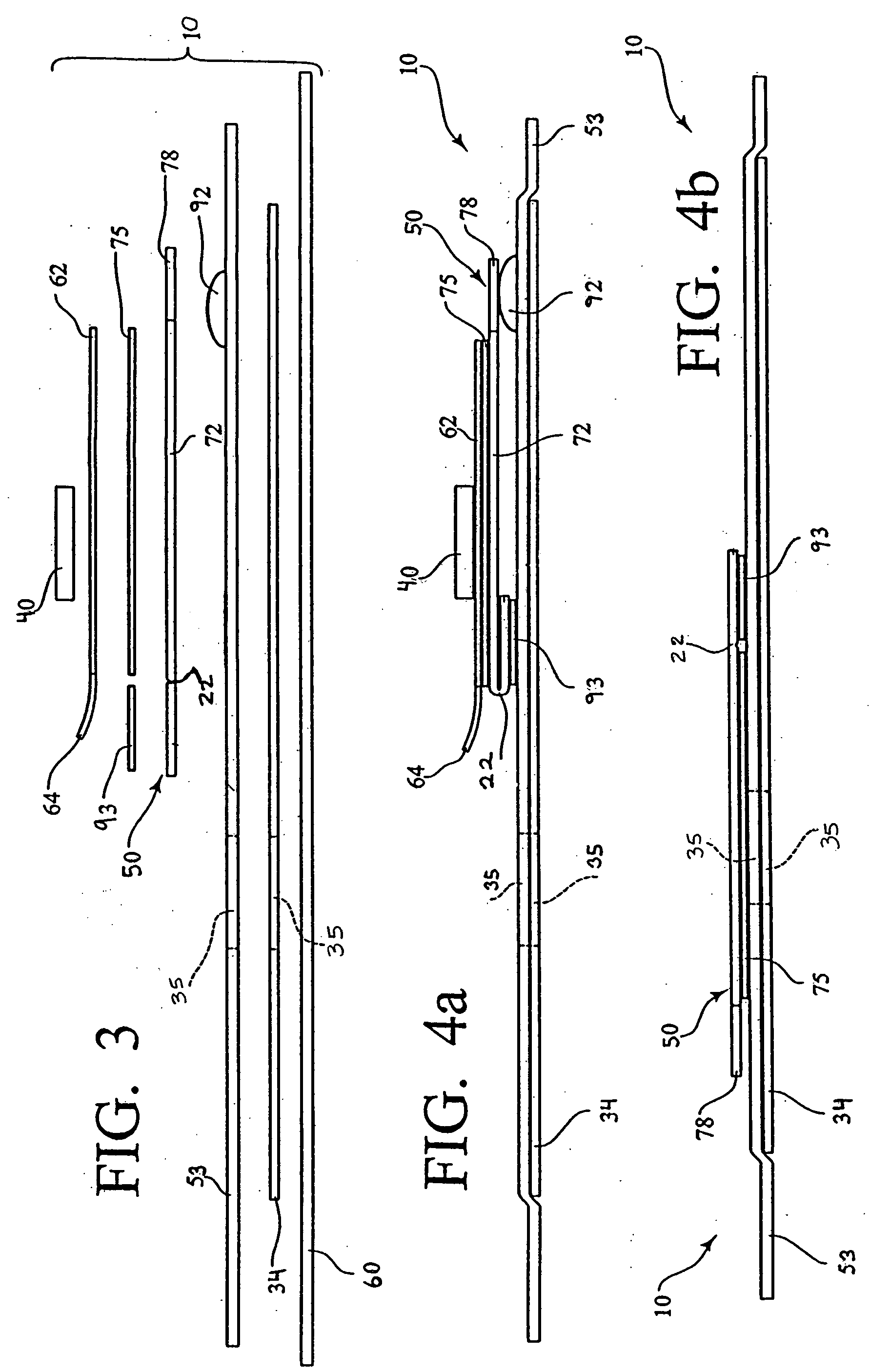Simplified one-handed preemptive medical procedure site dressing to prevent sharps injuries and exposure to bloodborne pathogens
a preemptive medical procedure and simple technology, applied in the field of dressings for broken skin, can solve the problems of not offering the advantages, health care workers are at risk of serious infections, and the spread of bloodborne pathogens to clinical practitioners and others by contact with the body fluids of infected patients is an inherent risk that is routinely taken
- Summary
- Abstract
- Description
- Claims
- Application Information
AI Technical Summary
Benefits of technology
Problems solved by technology
Method used
Image
Examples
Embodiment Construction
[0071] Before discussing the structure of the invention in detail, note that the layers of materials used in the structure are quite thin. In the various figures, the thicknesses are sometimes exaggerated for clarity of illustration. In particular, layers of adhesive are usually not shown, as the adhesive is generally coated directly onto the components and is not technically a separate part. All adhesive coated parts are clearly identified and the sides and portions of the components that are adhesive coated are clearly defined. Recognize, also, that when exaggerations occur, they also exaggerate the curvatures that occur in the drawings at the overlapping intersections of various layers.
[0072] FIGS. 1-4 are drawings of one embodiment of the present invention. FIG. 1 shows an embodiment of the present invention from above as it may be packaged before use. The complete dressing is generally designated as 10. The dressing 10 is composed of multiple components layered on top of each o...
PUM
 Login to View More
Login to View More Abstract
Description
Claims
Application Information
 Login to View More
Login to View More - R&D
- Intellectual Property
- Life Sciences
- Materials
- Tech Scout
- Unparalleled Data Quality
- Higher Quality Content
- 60% Fewer Hallucinations
Browse by: Latest US Patents, China's latest patents, Technical Efficacy Thesaurus, Application Domain, Technology Topic, Popular Technical Reports.
© 2025 PatSnap. All rights reserved.Legal|Privacy policy|Modern Slavery Act Transparency Statement|Sitemap|About US| Contact US: help@patsnap.com



